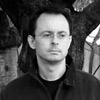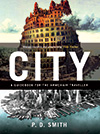In the 1920s and 30s, Morris "Moe" Berg was a Major League Baseball player. He started out with the Brooklyn Dodgers in 1923 and finished in 1939 with the Boston Red Sox. Despite the length of his career, by all accounts he was nothing special as a baseball player.

In December 1944, Moe found himself in the auditorium of the Zurich Polytechnic where a rebellious Einstein had once studied (one of his lecturers described him as a "lazy dog" for his failure to attend maths classes). On the stage that day was Werner Heisenberg, one of the central figures in the Nazi atomic bomb program, and Moe Berg was listening intently to what he was saying.
Moe was no fool. The six-foot one-inch tall baseball player had shone in his first appearance on the radio quiz show Information Please in 1938. A regular on the show later said he was the "most scholarly professional athlete" he'd ever met. At Princeton, Moe had studied seven languages, including Sanskrit. But it was German he needed that day in Zurich.
Despite his undoubted language skills, it's unclear how much of Heisenberg's abstruse discussion of S-matrix theory Moe Berg actually understood. After all, he wasn't a physicist. But what is clear is that Heisenberg didn't mention the atom bomb. For if he had, the baseball player from Newark would have reached into his pocket, taken out a .45 pistol, and shot him dead.
For Moe Berg - codename 'Remus' - was an operative of the OSS, the Office of Strategic Services, America's first central intelligence agency. His mission that day was to kill Heisenberg if he gave even the slightest hint during his lecture that the Nazis were close to building an atomic bomb. Fortunately for the quantum theorist, they weren't and the .45 stayed in Moe's pocket.
It's an extraordinary story - one of many moments of individual bravery now consigned to the history books of the atomic age. I came across it while reading the new paperback edition of Jeffrey T Richelson's Spying on the Atomic Bomb, a fascinating and detailed account of America's struggle to force the nuclear genie back into the bottle. Berg's exploits take up just a few pages of Richelson's impressive study which brings the story of proliferation right up to date with the latest intelligence assessment on Iran's atomic ambitions. His book reveals the secret history of spies and nuclear science that governments have in the past tried to keep hidden from their citizens.
Of course, in the Cold War most people were well aware of the threat from atomic weapons. Pop culture was full of references to the atomic age: fallout, H-bombs (as well as C-bombs and N-bombs), Geiger counters, radioactivity, megadeaths, and Doomsday Machines - this was the vocabulary of mass destruction that filled the newspapers and airwaves.
The A-word featured in countless film titles, from Canadian Mounties vs the Atomic Invaders (1953) to The Atomic Man (1956). Giant radioactive ants and dinosaurs rampaged across cinema screens. And in the first James Bond film, Dr No (1962), spies and mad atomic scientists came together in a cinematic formula that would prove a perennial success at the box-office.

As well as B movies about the A-bomb, children played with their toy Geiger counters and ate atomic fire ball candy. There were zappy atomic ray guns and, for the serious atomic nerds, there was the atomic energy lab, with real samples of uranium ore. (Can you imagine the teacher's reaction today if one of her kids came up and said, "Hey, miss, Susie has stolen my uranium!"?)
But for the adults, there was always the fear nagging in the back of their minds about what to do if the sirens sounded. Would government advice on how to "Protect and Survive" or "Duck and Cover" really be any good? One government sponsored book On How to Survive an Atomic Bomb, published in 1950, gave sartorial advice for Doomsday: women should wear stockings and long-sleeved dresses, and men should wear wide-brimmed hats.

For those who didn't swallow the official propaganda, there were other fanatasies. Such as the survivalist dream of returning to a frontier existence after the bombs had fallen and society had dissolved into a Mad Max world. It was a warped dream that spawned atomic erotica and even post-nuclear porn - books like Jane Gallion's Biker (1969) and George Smith's The Coming of the Rats (1961).

Today references to atomic or nuclear imagery have largely dropped out of pop culture. In fact, when they do appear, nukes are more likely to be saving the planet than destroying it, as in films like Armageddon (1998) or Sunshine (2007). The Cold War and the Atomic Age seem like ancient history to a new generation - stuff people tell you in school. Few really believe any more that "This Could Happen Tomorrow!".
Personally, I was never a great fan of the Atomic Energy Lab. But, as books like Richelson's show, the nukes are still out there - in the UK and the US as well as Iran and Russia. We might not be so obsessed with them, but they haven't gone away. And as President Putin gloats over the launch of a new missile that can hit a target 3,800 miles away with pin-point accuracy, the headlines are once again speaking of a new Cold War. We may need people like Moe Berg sooner than you think.
[also posted on TNB]






